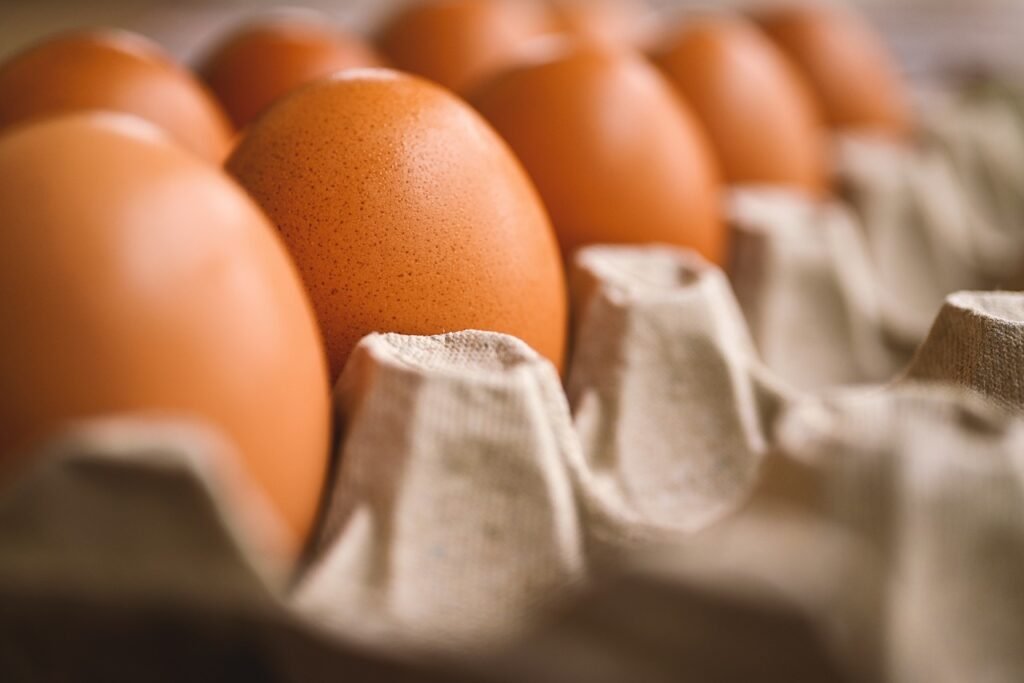Cucumber Growing Guide From Seed To Harvest To Health Benefits
.jpg)
Cucumbers are not only a refreshing and versatile vegetable, but they also offer a range of health benefits. From hydration and weight loss to promoting healthy skin and hair, cucumbers are a nutrient-rich addition to any diet.
Learn how to grow your own cucumbers from seed to harvest and discover the different types of cucumbers available. In this comprehensive guide, we will explore everything you need to know about growing, using, and protecting your cucumber plants.
Get ready to become a cucumber expert!
How to Grow Cucumbers from Seed to Harvest?
Learning how to grow cucumbers from seed to harvest involves essential steps such as choosing the right seeds, preparing the soil, caring for seedlings, and finally harvesting the mature fruits.
To begin this rewarding journey, selecting high-quality cucumber seeds is crucial. Look for varieties that suit your climate and growing conditions.
Once you have chosen your seeds, it’s time to prepare the soil. Cucumbers thrive in well-draining, nutrient-rich soil, so amend your garden bed with compost or aged manure.
When it’s time to care for your seedlings, ensure they receive adequate water and sunlight. As your cucumber plants mature, monitor their growth and be ready to harvest when the fruits reach the desired size for optimal flavor.
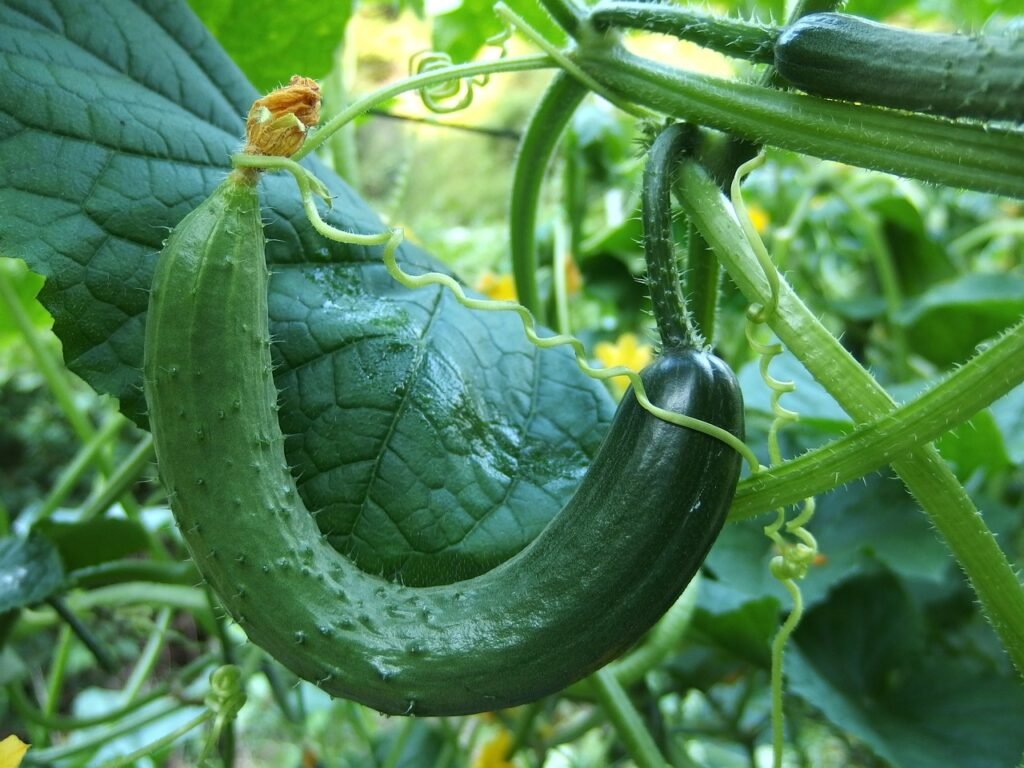
Choosing the Right Seeds
Selecting the appropriate cucumber seeds is crucial for a successful harvest, ensuring the desired variety and quality of the cucumbers grown.
- When choosing cucumber seeds, one must consider factors like disease resistance, growth habits, and adaptability to specific climates.
- Opting for disease-resistant varieties can help prevent common problems such as powdery mildew and cucumber mosaic virus, ensuring a healthier crop.
- Selecting seeds based on growth habits, whether bush or vine, can impact space utilization and ease of maintenance in your garden.
- High-quality cucumber seeds not only yield better tasting cucumbers but also tend to be more resilient and productive throughout the growing season.
Preparing the Soil
Properly preparing the soil before planting cucumbers is essential to provide the right nutrients and growing conditions for healthy plant development.
This process involves ensuring that the soil is well-draining to prevent waterlogging which can lead to root rot. Checking the pH levels of the soil is crucial as cucumbers thrive in slightly acidic conditions of around 6 to 6.8. Adequate levels of nutrients such as nitrogen, phosphorus, and potassium should also be present in the soil to support the vigorous growth of cucumber plants. By paying attention to these factors, growers can create an optimal environment for successful cucumber cultivation.
Planting and Caring for Seedlings
Planting cucumber seedlings correctly and providing adequate care through watering, sunlight, and soil maintenance are key to ensuring healthy plant growth.
When planting cucumber seedlings, it’s essential to ensure they are placed in well-draining soil to prevent waterlogging, which can lead to root rot.
Regular watering is crucial, keeping the soil consistently moist but not overly saturated. Cucumbers thrive in full sunlight, so ensure they receive at least 6-8 hours of direct sunlight daily.
Regularly check the soil pH to maintain it within the optimal range of 6.0-6.8 for healthy growth. Pruning the plants when necessary and providing trellises for support can also help maximize yield and ensure proper airflow.
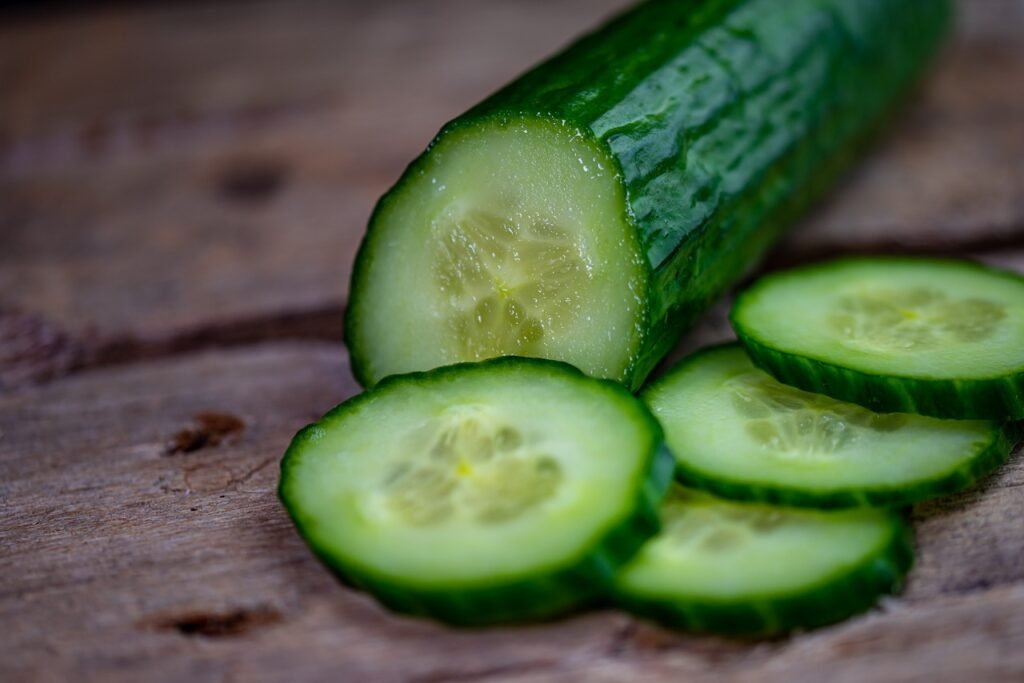
Harvesting Cucumbers
Knowing the optimal time to harvest cucumbers, along with proper storage techniques, ensures that you enjoy fresh and flavorful produce from your garden.
Picking cucumbers when they reach a firm, dark green color and are about 6-8 inches in length is ideal for ensuring their best taste and texture. Once harvested, store them in a cool, dry place to maintain their crispness. Avoid exposing cucumbers to direct sunlight or extreme temperatures, as this can lead to spoilage. Proper post-harvest care includes gently wiping them with a cloth to remove any dirt or moisture before storing.
Timely harvesting not only preserves the freshness of cucumbers but also maximizes their nutritional value and flavor.
What Are the Different Types of Cucumbers?
Explore the world of cucumbers with various types including slicing cucumbers, pickling cucumbers, and burpless cucumbers, each offering unique flavors and textures.
- Slicing cucumbers are the most common type, known for their crisp texture and mild flavor, making them perfect for salads and fresh eating.
- Pickling cucumbers, on the other hand, are smaller in size with bumpy skin, ideal for brining and preserving in pickling recipes.
- Burpless cucumbers, as the name suggests, are specially bred to reduce bitterness and decrease digestive issues, making them a popular choice for those with sensitive stomachs.
Each cucumber variety brings its own distinct qualities to the table, catering to different culinary preferences and preparations.
Slicing Cucumbers
Slicing cucumbers are versatile and ideal for fresh consumption, salads, and sandwiches due to their crisp texture and mild flavor.
Their refreshing crunch adds a delightful element to summer salads, providing a hydrating contrast to leafy greens and creamy dressings. Slicing cucumbers are also perfect for layering in sandwiches, adding a juicy bite that complements savory fillings. Their subtle flavor profile allows them to enhance other ingredients without overpowering them, making them a staple in various cuisines around the world. Whether sliced thinly for garnishes or chopped into chunky pieces for dips, these cucumbers bring a burst of freshness to any dish they grace.

Pickling Cucumbers
Pickling cucumbers are specially cultivated for pickling purposes, offering a firm texture, small size, and ideal flavor profile for creating delicious pickles.
Their small size makes them perfect for fitting into jars and ensuring that they soak up the pickling brine thoroughly. The firm texture of pickling cucumbers holds up well during the pickling process, resulting in crunchy and satisfying pickles. In terms of flavor, these cucumbers boast a balanced taste that absorbs the spices and vinegar, enhancing the overall pickle experience. Whether you prefer sweet, sour, or spicy pickles, pickling cucumbers are versatile enough to accommodate various flavor preferences, making them a popular choice for pickle-making enthusiasts.
Burpless Cucumbers
Burpless cucumbers, also known as seedless or Long English cucumbers, are crisp, seedless varieties that are easy to digest and have a mild, sweet flavor.
Their elongated shape and thin skin make them ideal for slicing into salads or using as a refreshing garnish. Unlike traditional cucumber varieties, burpless cucumbers are less likely to cause digestive discomfort due to their lower levels of cucurbitacin, a compound responsible for bitterness and indigestion in some cucumbers. This makes them a favored choice for those with sensitive stomachs or who simply prefer a more delicate cucumber taste. Their subtle, delicate flavor pairs well with a variety of dishes, from sandwiches to sushi rolls.
What Are Some Common Pests and Diseases for Cucumbers?
Cucumbers are susceptible to various pests like cucumber beetles and diseases such as powdery mildew and downy mildew that can impact plant health and yield.
Cucumber beetles can cause damage by feeding on the leaves, stems, and flowers of cucumber plants, leading to wilted or stunted growth. These pests can also transmit bacterial wilt disease.
Powdery mildew appears as a white powdery substance on the leaves, affecting photosynthesis and reducing fruit production. On the other hand, downy mildew causes yellow spots on the upper leaf surface and grayish fuzz on the lower surface.
To prevent these issues, practicing crop rotation, maintaining proper spacing between plants, and applying organic fungicides can help. In case of severe infestation, consider chemical control methods like insecticidal soap for cucumber beetles and sulfur-based fungicides for mildew diseases.
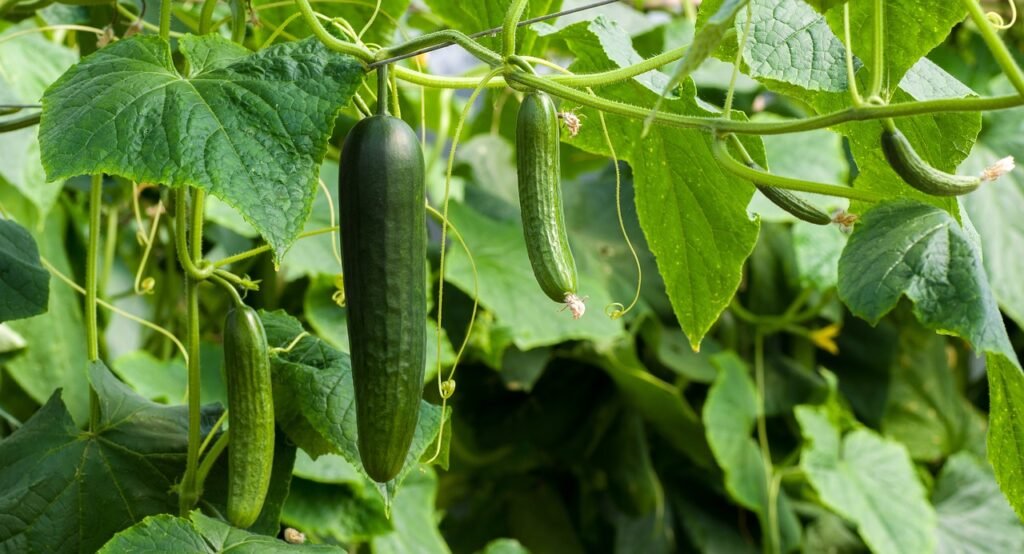
Cucumber Beetles
Cucumber beetles are notorious pests that feed on cucumber plants, leading to damage and reduced yields, requiring effective pest control measures for management.
These beetles typically target cucurbit crops, including various cucumber varieties, and can quickly multiply if left unchecked. Their distinct yellow and black stripes make them easily recognizable in the garden. The damage caused by cucumber beetles not only affects the leaves but also the fruits, causing scarring and promoting the spread of diseases.
To combat these pests, farmers and gardeners often resort to integrated pest management techniques, combining cultural practices, beneficial insects, and targeted organic pesticides to protect their cucumber plants and ensure a healthy harvest.
Powdery Mildew
Powdery mildew is a common fungal disease that affects cucumber leaves, leading to white powdery spots and potential plant weakening, highlighting the importance of disease prevention.
The symptoms of powdery mildew on cucumber plants include distorted growth of leaves, stunted fruit development, and reduced overall yield. If left untreated, this fungal infection can quickly spread throughout the entire plant and eventually lead to plant death.
To prevent powdery mildew, it is crucial to ensure proper airflow around the plants by spacing them appropriately and avoiding overcrowding. Watering techniques play a key role – it is important to water the plants at the base without wetting the foliage, as damp conditions encourage fungal growth. Regular application of fungicidal treatments can also help protect cucumber plants from powdery mildew.”
Downy Mildew
Downy mildew is a fungal disease that affects cucumber foliage, causing yellow lesions and eventual plant decline, underscoring the significance of disease prevention strategies.
Early detection is crucial in combating downy mildew, as symptoms may initially appear as yellow spots on the upper leaf surface, leading to a grayish-purple mold on the undersides.
Preventive measures include spacing plants adequately to ensure good air circulation, avoiding overhead watering to minimize humidity, and using resistant cucumber varieties.
Fungicides can be employed as a control method, with options like copper-based sprays or systemic fungicides. Timely application of these treatments can help manage downy mildew and protect cucumber plants from severe damage.
How to Prevent and Treat Pests and Diseases?
Implementing effective pest control and disease prevention methods, such as natural remedies, proper garden maintenance, and timely pruning, is crucial to safeguard the health and yield of cucumber plants.
- Consistent monitoring of your cucumber plants is key to catching and addressing any pest or disease issues early. Utilizing beneficial insects like ladybugs or lacewings can help control harmful pests organically.
- Practicing crop rotation and intercropping with companion plants can disrupt pest cycles. Proper watering techniques, such as watering at the base of plants to avoid wet foliage, can prevent fungal diseases.
- Integrate organic fertilizers rich in nutrients like nitrogen, phosphorus, and potassium to promote healthy growth and resilience in cucumber plants.
Natural Pest Control Methods
Employing organic pest control methods like companion planting or neem oil can help manage pests without harmful chemicals, preserving the organic integrity of homegrown cucumbers.
- Companion planting involves strategically placing certain plants near cucumbers which either repel pests or attract beneficial insects that prey on harmful pests.
- For instance, planting marigolds alongside cucumbers can deter pests like nematodes, while attracting ladybugs that feed on aphids.
- Neem oil, extracted from the seeds of the neem tree, acts as a natural insect repellent and disrupts the feeding and reproduction of many common cucumber pests.
- Introducing beneficial insects such as ladybugs, lacewings, or predatory mites can create a balanced ecosystem where natural predators keep pest populations in check.
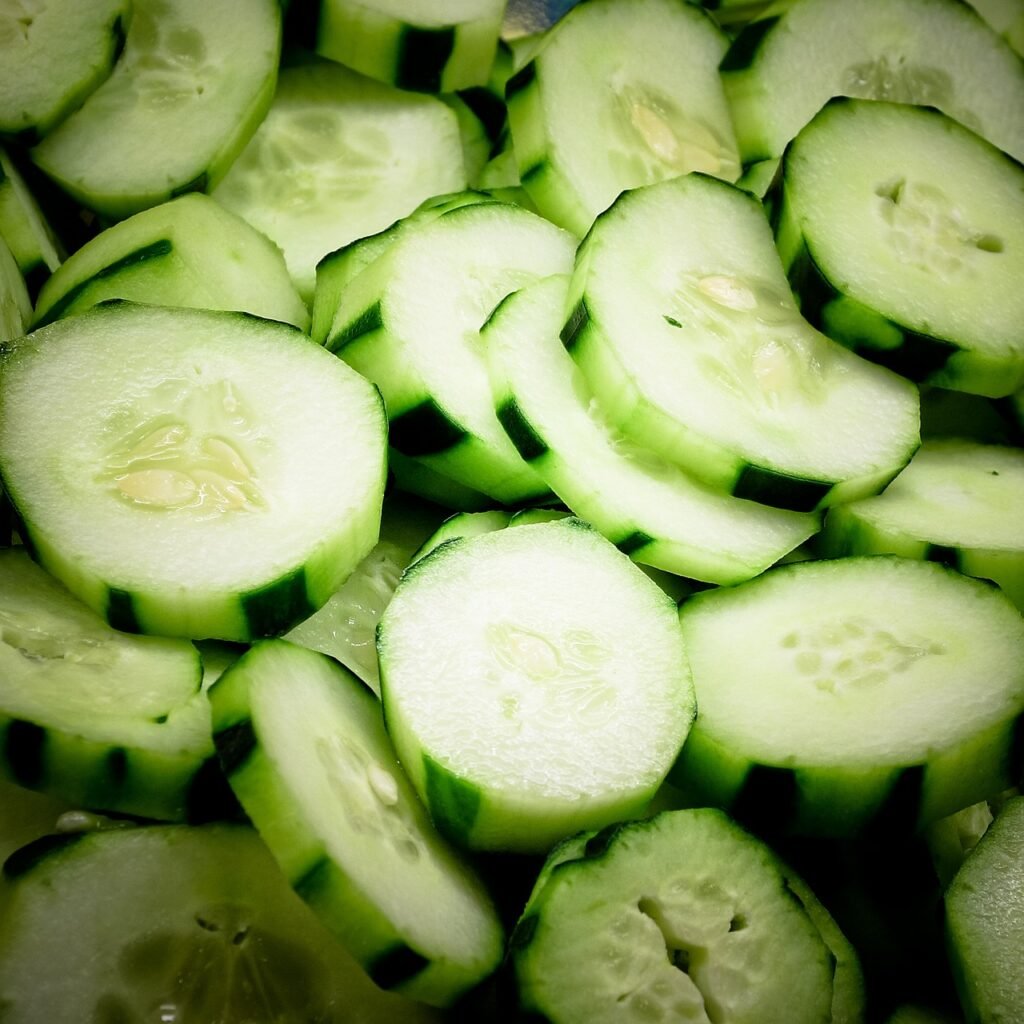
Fungicides and Pesticides
In cases of severe pest infestations or disease outbreaks, resorting to fungicides or pesticides approved for cucumbers can help control the situation effectively.
These chemical agents work by targeting specific pests or diseases that may be harming the cucumber plants. When applying fungicides or pesticides, it is crucial to follow the recommended dosage and application frequency to avoid any negative impact on the plants or the environment.
Some common methods of application include spraying the solution directly on the foliage or soil, depending on the type of pest or disease being targeted. To ensure safety, wearing protective gear such as gloves, goggles, and a mask is essential during the application process.
For those looking for more environmentally friendly options, there are organic and natural alternatives available that can help manage pest and disease issues without causing harm to beneficial insects or the ecosystem.
Proper Garden Maintenance
Regular pruning, adequate watering, and maintaining garden hygiene play a pivotal role in preventing pest and disease problems in cucumber plants.
- Pruning techniques such as removing dead or diseased leaves and stems help improve air circulation around the plants, reducing the risk of fungal diseases.
- Proper watering schedules, ensuring the soil is consistently moist but not waterlogged, are essential for promoting healthy growth and fruit development in cucumbers.
- Maintaining cleanliness in the garden, such as removing fallen debris and weeds, can prevent potential hiding spots for pests and diseases, keeping the cucumber plants thriving and productive.
What Are the Health Benefits of Cucumbers?
Cucumbers offer a plethora of health benefits, ranging from aiding in hydration and weight loss to promoting healthy skin and hair.
These versatile veggies are rich in nutrients like vitamin K, which plays a key role in bone health and blood clotting. Cucumbers are a great source of antioxidants such as beta-carotene and flavonoids, which help protect the body from free radical damage. Their high water content not only keeps you hydrated but also supports digestion by aiding in the movement of food through the digestive tract.
Whether eaten as a snack, added to salads, or used in beauty routines, cucumbers are a refreshing and nutritious addition to any diet.
Hydration and Weight Loss
Cucumbers are excellent for hydration due to their high water content, making them a perfect low-calorie snack for those looking to manage weight.
In addition to aiding in hydration, cucumbers are also packed with essential nutrients like vitamins K and C, as well as minerals such as potassium and magnesium. These nutrients not only support overall health but also play a crucial role in weight management.
The high water and fiber content in cucumbers can help you feel full and satisfied, reducing the likelihood of overeating. Incorporating cucumbers into your diet can also support digestion and promote a healthy metabolism, both of which are essential for weight loss efforts.
Nutrient Rich
Cucumbers are a nutrient powerhouse, packed with essential vitamins and minerals that contribute to overall health and well-being.
For example, cucumbers are rich in vitamin K, an important nutrient for blood clotting and bone health. They also contain vitamin C, an antioxidant that helps boost the immune system and promote skin health. Cucumbers provide minerals such as potassium, which plays a vital role in heart function and regulating blood pressure. The antioxidants found in cucumbers, such as beta-carotene and flavonoids, help combat oxidative stress and inflammation in the body, contributing to a lower risk of chronic diseases.
Helps with Digestion
Including cucumbers in your diet can aid digestion, thanks to their fiber content that supports gut health and regular bowel movements.
Fiber plays a crucial role in maintaining digestive health as it helps to regulate the bowel movements, prevent constipation, and promote overall gut function. Cucumbers, being a good source of dietary fiber, can contribute to the smooth functioning of the digestive system. The soluble fiber in cucumbers absorbs water in the digestive tract, adding bulk to the stool and easing its passage through the intestines. This not only helps in preventing digestive issues but also supports the growth of beneficial bacteria in the gut, ensuring a healthy gut flora balance.
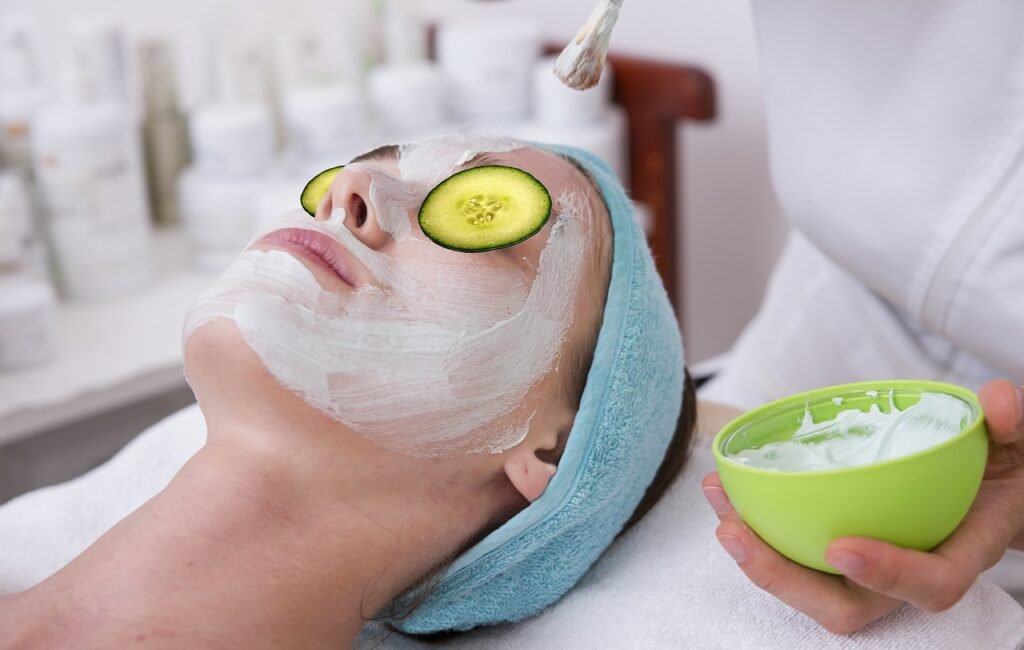
Promotes Healthy Skin and Hair
Cucumbers are known for their skincare benefits, helping to hydrate the skin, reduce puffiness, and strengthen hairdue to their nourishing properties.
- The hydrating qualities of cucumbers make them a fantastic natural remedy for dry skin, infusing it with moisture and leaving it feeling refreshed and revitalized.
- Cucumbers contain antioxidants and silica, which contribute to reducing inflammation and puffiness, especially around the eyes.
When it comes to hair health, incorporating cucumber-based products or utilizing cucumber juice can help in promoting hair growth and strengthening the hair follicles thanks to its high content of vitamins and minerals essential for nourishing the hair strands.
How to Use Cucumbers in Cooking?
Cucumbers can be utilized in various culinary creations, from refreshing cucumber salads and sandwiches to nutritious cucumber smoothies.
Their crisp texture and mild flavor make them a popular choice for light and healthy dishes, such as Mediterranean-inspired Greek cucumber salad or a classic cucumber and cream cheese sandwich.
The high water content of cucumbers not only adds a refreshing element to recipes but also provides hydration and aids in digestion.
Incorporating cucumbers into smoothies is a great way to boost your daily intake of vitamins and minerals, like vitamin K and potassium, while enjoying a cool and revitalizing drink.
Cucumber Salad
Cucumber salad is a refreshing dish made with sliced cucumbers, herbs, and a tangy dressing, perfect for a light and healthy meal or side dish.
To prepare this vibrant salad, start by slicing crisp cucumbers into thin rounds or half-moons, allowing their natural crunch to shine through. Fresh dill, mint, or parsley can be finely chopped and added to elevate the flavors with a burst of herbaceous freshness. The tangy dressing, often a combination of olive oil, lemon juice, and a hint of garlic or shallots, enhances the overall taste profile.
The beauty of a cucumber salad lies in its simplicity – highlighting the natural sweetness of cucumbers while balancing it with savory and acidic notes.
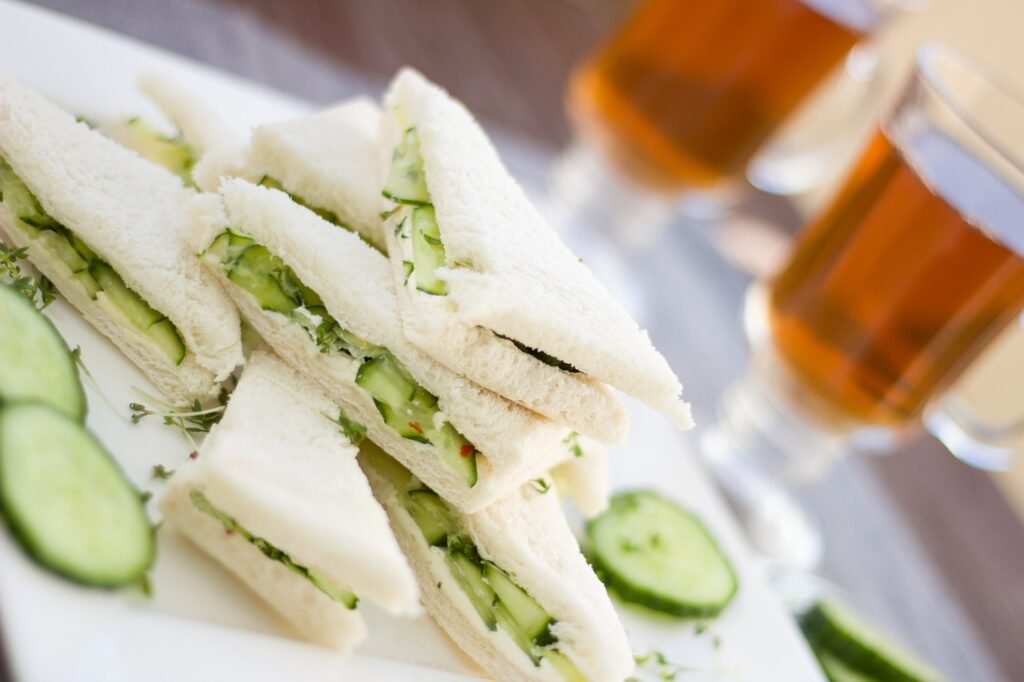
Cucumber Sandwiches
Cucumber sandwiches are classic tea-time treats featuring thinly sliced cucumbers between bread slices, offering a light and flavorful snack option.
The charm and simplicity of cucumber sandwiches lies in their effortless preparation – just a few ingredients and minutes are all you need to create this delightful treat. The thin, crisp cucumber slices provide a refreshing crunch, perfectly complementing the soft bread.
These sandwiches are a great addition to picnics, brunches, or afternoon tea. Their lightness makes them a guilt-free indulgence, perfect for those looking for a satisfying yet healthy snack. Whether enjoyed alone or accompanied by a cup of tea, cucumber sandwiches never fail to impress with their simplicity and delicious taste.
Cucumber Smoothie
Cucumber smoothies are nutritious beverages blending cucumbers with fruits and greens to create a refreshing and hydrating drink that’s perfect for a summer cooldown.
Cucumbers, being the main ingredient, are rich in water content, making cucumber smoothies incredibly hydrating. The addition of fruits like pineapple, kiwi, or berries adds a burst of sweetness and essential vitamins to the mix. Greens such as spinach or kale elevate the nutritional value by providing a dose of fiber and antioxidants. These ingredients combined make cucumber smoothies a powerhouse of nutrients, promoting skin health, aiding digestion, and boosting energy levels naturally.
Enjoyed cold, cucumber smoothies offer a revitalizing and delicious way to stay hydrated during hot summer days.
Cucumber Growing Guide Wrap Up
Diving into the world of cucumber cultivation opens up a realm of gardening delight, offering a refreshing crunch to your summer salads and dishes. As you explore the various types and discover the joy of harvesting your own crisp cucumbers, remember that the journey doesn’t end here. Our blog is a treasure trove of gardening wisdom, featuring insights on a multitude of vegetables waiting to sprout in your garden.
Subscribe to our newsletter for the latest gardening trends, tips, and tricks delivered directly to your inbox. Embark on a green adventure with our vegetable growing guides and join a community passionate about bringing the bounty of the earth to the table.
Frequently Asked Questions
Cucumbers can be grown from seeds by first preparing a container or garden bed with nutrient-rich soil. Sow the seeds at a depth of 1-2 inches and water them regularly. When the seedlings have grown to about 3-4 inches tall, thin them out to leave 1 plant per 1-2 square feet.
Cucumbers are ready to be harvested when they are firm, dark green, and about 6-8 inches in length. This usually occurs about 50-70 days after planting. It’s important to check your cucumbers daily as they can quickly become overripe and bitter.
Cucumbers require consistent moisture to thrive, so it’s important to water them regularly. Water them deeply once or twice a week, depending on the weather and soil conditions. Avoid getting the leaves wet as this can lead to fungal diseases.
Cucumbers are low in calories and high in water content, making them an excellent snack for weight loss. They are also a good source of vitamins and minerals, such as vitamin K, magnesium, and potassium. Additionally, cucumbers may help with hydration, digestion, and skin health.
Yes, cucumbers can be grown indoors as long as they receive enough sunlight or artificial light. Use a container with drainage holes and fill it with nutrient-rich soil. Provide support for the cucumber plant to climb and make sure to water regularly.
Cucumbers can be preserved in a variety of ways, including pickling, canning, and freezing. Pickling cucumbers involves soaking them in a vinegar and salt solution, while canning involves processing them in jars with hot water. Freezing cucumbers is a quick and easy method, but they may become mushy when thawed.



